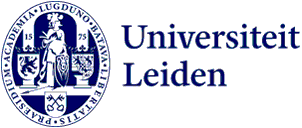
Your old smartphone is indispensable for the energy transition
By 2050, we can obtain 40 per cent of our demand for scarce earth metals from old smartphones, batteries, and wind turbines. This is crucial because otherwise, we may not have enough to accomplish the energy transition. An international team of researchers from China, the UK, and Leiden's Tomer Fishman describe this in the January cover article of Nature Geoscience.

To manufacture all the wind turbines, solar panels, and batteries needed for the energy transition, we require scarce materials. We won't have enough of those materials if we continue as we are now. Additionally, Europe and the US heavily rely on, in particular, China to source these substances. We can partially recover materials from products, but this is currently happening on too small a scale. Not only are many discarded smartphones gathering dust in our homes: if we turn them in at all, scarce materials are difficult to recycle because of the design. Wind turbines, too, will load up Europe with many thousands of tons of waste if we don't start recycling them better.
Global overview of demand and supply...
If we step up our efforts, or rather, work very hard, we can potentially derive 40 per cent of our demand for these substances from existing products by 2050. Tomer Fishman from the Institute of Environmental Sciences in Leiden joined researchers from the Chinese Academy of Sciences and Newcastle University in the UK to analyse the future global demand and supply of four rare earth metals necessary to achieve climate goals. They developed a model to assess the effects of different strategies on the global demand and supply of neodymium, praseodymium, dysprosium, and terbium, highlighting the dynamics between different world regions. The researchers zoomed in on these circular strategies:
- reuse of products;
- recycling of materials from products;
- substitution by other materials;
- reduction, or ensuring that less of the scarce material is needed in a product.

...And the emissions from the actions to extract them
Industrial ecologist Fishman focuses on the analysis and interpretation of the model results. ‘The model provides a rich and complex set of results, such as the future need for these four metals, their mining supply and availability for reuse from old products. But also the greenhouse gas emissions from all these actions in different regions on Earth and under three climate scenarios.’
Interdependency expressed in numbers
The interpretation of the model tells many intertwined stories about climate change, the green transition, the circular economy, regional, and geopolitical challenges, according to Fishman. ‘For the first time, we see not just how materials gradually shift from the ground to products worldwide, but also how they move from one region to another.’ The interdependence of a supplier country like China and a user region like the EU is now expressed in numbers.
‘Action is needed on all fronts’
The authors hope that their findings can lead to a global, collaborative, and just approach to resource management and climate change. ‘Our work clearly demonstrates the potential of circular use, for example, in the European energy transition.’ To realise that potential, a considerable effort is required. Fishman says, ‘Coordinated action from policymakers, new technologies, new product design, new business models, legal frameworks, and behavioural change. We need to take action on all these fronts.’
Text: Rianne Lindhout
Image above article: Flickr/Hellebardius
